B2B Sales Funnel: Complete Guide for Marketers
by Frankie Karrer
8 Min Read
Check out Inc.’s excellent coverage on MNTN’s mission to make TV advertising impactful (and accessible) for all. Learn More
This is your compendium of all things OTT advertising for 2025. From benefits and best practices to measuring campaign success, we’ve got you covered.
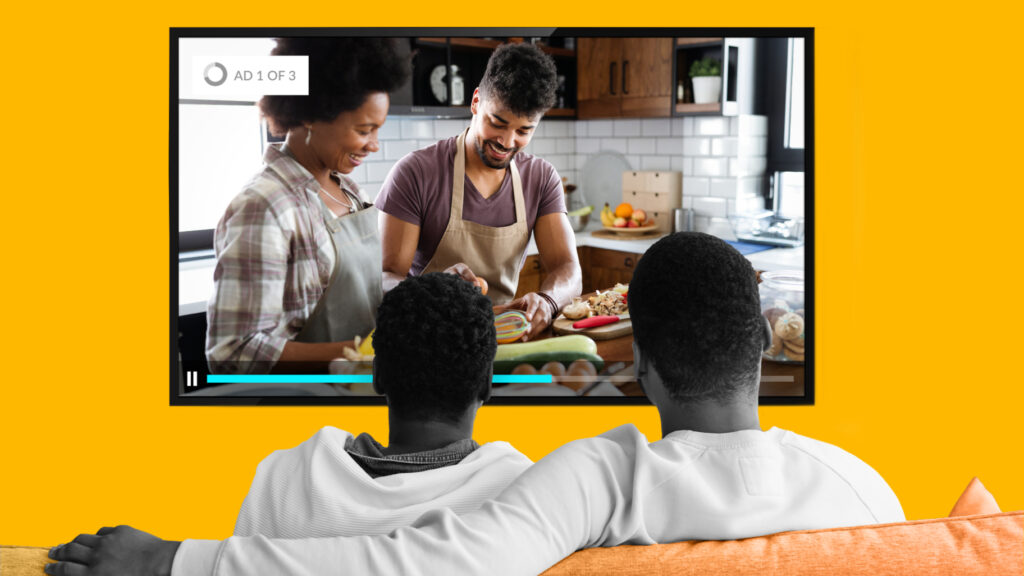
19 Min Read
As the digital landscape evolves, OTT advertising has become a potent tool for marketers aiming to reach audiences directly on their streaming content platforms.
Over-the-top ads, cutting through traditional broadcast methods, allow for targeted, personalized advertising beyond the constraints of conventional TV. This article delves into the intricacies of OTT advertising, exploring how it works in 2025 and why it’s becoming an indispensable part of modern digital marketing strategies.
Over-the-top (OTT) advertising refers to delivering ads via streaming media services directly offered to viewers over the Internet, bypassing traditional cable, broadcast, and satellite TV platforms.
Leveraging advanced targeting and interactive ad capabilities, OTT advertising offers advertisers the opportunity to reach specific audience segments viewing content on devices like smart TVs, computers, and mobile devices. It also provides detailed analytics for measuring effectiveness.
This content isn’t limited to TV only, but on any device that runs on an internet connection:
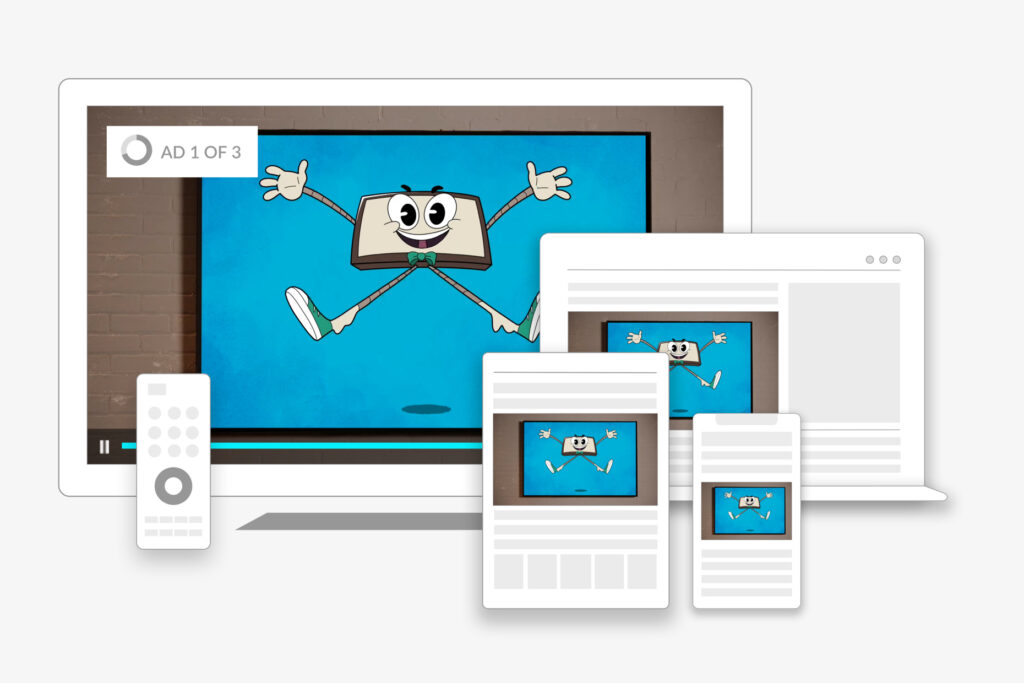
OTT content is at its most optimum – from a branding and performance perspective – when viewed on TV in the comfort of your living room, but more about that later.
What Is the Difference Between OTT and CTV? CTV (Connected TV) is a device that is connected to the internet and allows users to access OTT content on a television set. While OTT is the method of delivering video content, CTV is the device used to consume the content. CTVs include smart TVs, streaming devices, and gaming consoles, among others.
For a more in-depth comparison, learn about the difference between OTT vs. CTV advertising.
What Is the Difference Between OTT and VOD? VOD (Video on Demand) is a service that allows viewers to select and watch video content on-demand at their convenience. The main difference between VOD and OTT is that OTT is a method of content delivery, while VOD is the type of content delivered. We’ll discuss the various types of VOD in more detail below.
OTT advertising is a game-changer. It bridges the gap from being a pure branding exercise (on Linear TV) to one that can also be measured and tracked.
Some of these marketing platforms pride themselves on their data-driven approach, while others claim to be at the forefront of precision targeting. MNTN addresses all of the concerns a performance marketer may have, packaged in a single user interface.
The primary benefits of OTT advertising include the following.
Three words: Living Room Quality.
We acknowledge that OTT isn’t only limited to TV, but across other internet-connected devices as well. However, LRQ serves ads exclusively on TV devices as we know that this device is superior to other devices in terms of ad experience. If you’re working with an ad platform that serves OTT ads across other devices, you’re missing out on the true benefits of this ad channel.
MNTN Living Room Quality serves 15 or 30-second non-skippable ads to deliver a premium ad experience.
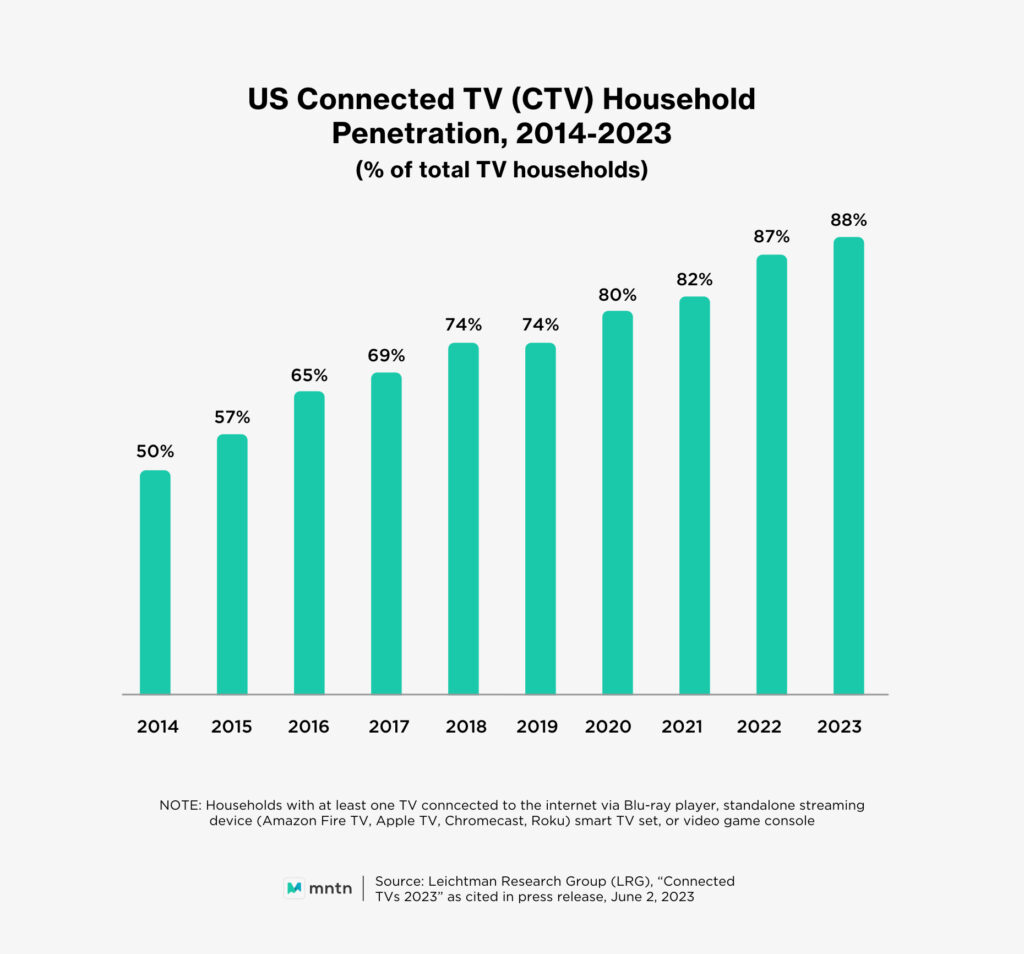
Serving any advertisement on low-quality inventory dilutes the impact of even the most compelling of advertisements – and is a huge waste of marketing dollars. A sweeping majority of advertisers agree that this is a huge concern of any brand, too:
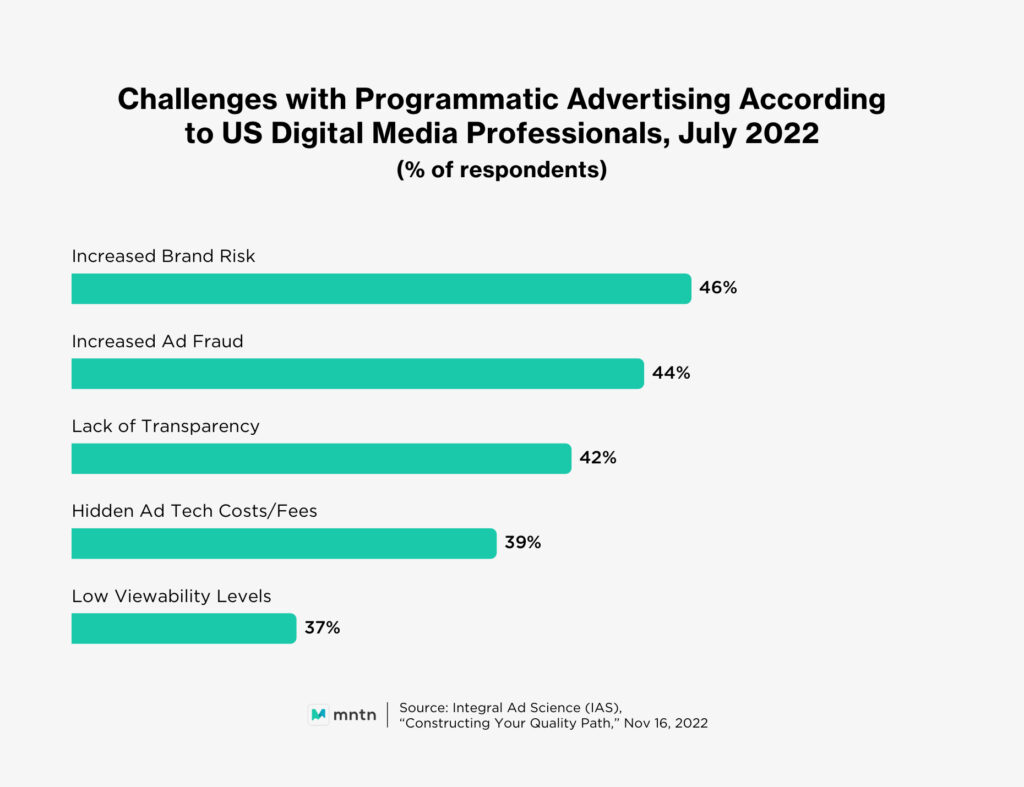
We’ve selected only premium TV networks that we know are aligned to your brand, and your audience and specifically hand-picked to drive performance. These are 125+ reliable networks that we’ve all grown to know and love, like CNN, CNBC, Food Network, and more.
Where over-the-top advertising shines is in its reporting and OTT targeting capabilities.
We’ve created OTT technology that goes beyond traditional TV targeting and matches you with consumers who will love your brand and take action — all to help you drive the best outcomes. You can also use first-party data from your website visitors and reach them with retargeting ads on their other devices and OTT.
View the reports and analytics for these as they happen in real-time on our reporting dashboard – better yet, see how these perform in relation to your other digital marketing efforts through our integration with Google Analytics to get a holistic view of your campaign.
You can track metrics from your OTT advertising efforts on platforms like MNTN, including:
These performance metrics and KPIs can all be viewed on our reporting interface, and in any permutation to show those metrics that matter most to your brand.
There are several steps involved in the OTT advertising process. Here is a high-level overview of what you can expect:
OTT advertising, when served on television screens, works like any other direct response channel – except with the immersive experience unique only to television.
We delve into this further in the section below, but platforms like MNTN and other OTT advertising platforms like MNTN Performance TV (that serves exclusively on TV screens and not other devices) let brands set up audience targeting, measure who is viewing an advertisement, and then view how this stacks up against their other digital marketing efforts.
It also works cross-device, meaning that the platform tracks users visiting your brand’s website after viewing OTT ads until they finally convert on your website.
MNTN Performance TV offers superior reporting capabilities that track ad-side metrics like ad completion and website visits, as well as the popular measures of ROI including ROAS, CPV, and conversion rate. These benchmarks are a critical component for measuring the success of your OTT campaign.
There are many ways that OTT ads can be delivered through streaming media over the internet. The most common types of OTT ads are:
OTT advertising provides a range of options for brands to reach viewers through streaming media. Each type of ad has its own advantages and can be used in different ways to engage audiences and drive results.
There are also several OTT platforms (or business models) that provide streaming content directly to consumers. Some of the most common types are SVOD, AVOD, TVOD, and PVOD.
Subscription-based Video on Demand (SVOD) is a type of streaming service where users pay a recurring subscription fee to access a library of video content, including TV shows, movies, and original content. SVOD platforms offer users unlimited access to their content library without any commercial interruptions.
Examples of SVOD platforms include Netflix, Hulu, Amazon Prime Video, and Disney+.
Advertising-based Video on Demand (AVOD) is a model of delivering video content over the internet, where the content is free to viewers, but revenue is generated through advertising. In this model, the viewer does not have to pay for the content but is subjected to ads during playback. The revenue generated from the ads is used to support the production and distribution of the content.
Examples of AVOD platforms include YouTube, Crackle, and Pluto TV.
Transactional Video on Demand (TVOD) is a type of video-on-demand service that allows viewers to access content on a pay-per-view basis. With TVOD, viewers can rent or purchase individual movies or TV shows and typically have a set period to watch the content before it expires. TVOD is often used for newer releases that are not yet available on subscription-based services, as well as for one-time events like concerts or sporting events.
Examples of TVOD platforms include Amazon Prime Video, iTunes, and Google Play.
Premium Video on Demand (PVOD) is a video distribution model where viewers can rent or purchase movies or TV shows that have just been released to home entertainment platforms before they are available on subscription-based video on demand (SVOD) or traditional physical media like DVDs or Blu-ray discs.
PVOD enables consumers to access high-quality video content from the comfort of their own homes without having to go to the cinema or wait for the content to be available on other platforms. Typically, PVOD titles are available to rent for a limited time period, usually 48 hours, at a premium price point, which is often higher than the cost of renting the same title through traditional video-on-demand (VOD) platforms.
There are several popular OTT devices used to access streaming media, including TV, mobile, desktop, and tablet. Where the ‘OTT’ definition comes into play is that the content being streamed on these devices is going “over” via an internet connection.
These are just a few examples of the most popular OTT devices available on the market.
We created an entire content series dedicated to this very topic, comparing the effectiveness of OTT advertising to well-known players in the programmatic space like YouTube, Demand Side Platforms (DSPs), Linear TV, Display-Only, and Video Ads.
Apart from the inventory, tracking, measurement, and overall experience benefits – attribution is a priority for performance marketers and they should be wary of how this is measured on other OTT ad platforms.
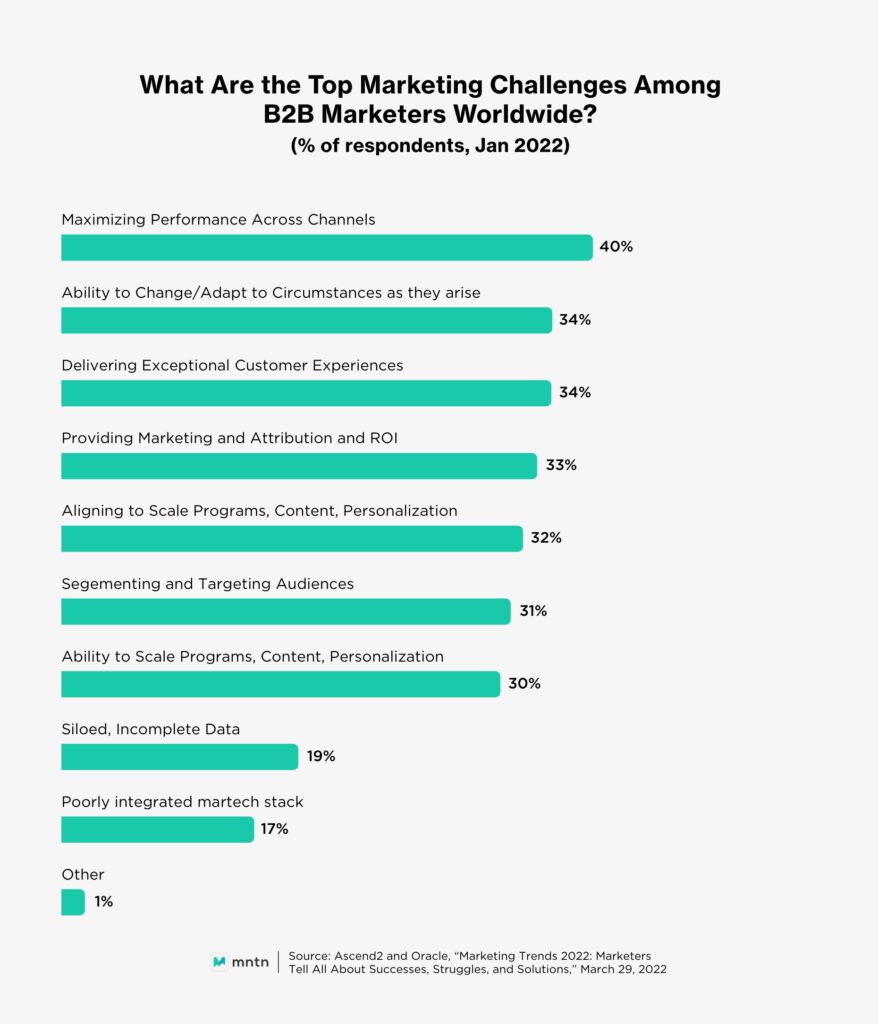
A legitimate performance marketing channel should be as transparent as possible, and MNTN Performance TV addresses this need through its accurate attribution capabilities via its proprietary Verified Visits™ feature.
Verified Visits™ is our proprietary technology that measures any user visits to your site following the guaranteed in-view display of your ads, in a window of time defined by you. That means you’ll know when someone views your OTT ad to completion, and what device they use to convert. And since it only takes credit if the original ad was viewed to completion, it ensures it was your ad that initially prompted the sales journey.
Results you can expect from running ads on OTT inventory may vary depending on budget, type of industry, and time of year. However, you can expect to see performance gains across the board—take some of these results that we’ve seen on our performance marketing platform for starters:
Nope, OTT marketing is entirely vertical agnostic and benefits many categories. We have worked with global movie studios looking to drive brand awareness for their latest releases, through to retailers and F&B (food and beverage) brands. Any brand with a website or online presence to drive traffic is a suitable candidate.
Nowadays, the majority of consumers go ‘straight to the source’ and buy directly from brands. This, combined with the fact that 87% of households now own an OTT device, is a compelling case for OTT advertising.
These consumers are digital natives at heart and are used to consuming information (and purchasing) cross-device, which is one of the reasons why so many advertisers show interest in it as a marketing channel.
As long as you have your ads created within the right specifications, then you’re ready to launch your OTT campaign in four simple steps:
Pick your poison – prospecting or retargeting? Whichever OTT campaign strategy you choose, MNTN Performance TV offers a solution for both:
OTT ads can be bought in two ways:
If you’re looking for a combination of flexibility and value without having to sacrifice (or worry about) where your content will end up, programmatic advertising is a wise choice.
Streaming TV advertising on OTT platforms is a great way to reach an audience migrating away from traditional linear television in a more cost-effective manner. Traditional TV advertising requires a large upfront commitment which significantly limits the number of businesses participating.
On the other hand, OTT ads can be purchased on a month-to-month basis, giving users the freedom to spread out ad dollars across multiple campaigns seeking different outcomes.
In addition, your dollars will go much further on OTT, compared to cable TV advertising, when it comes to reaching specific audiences. With targeting options and conversion tracking that go far beyond the simplicity of linear, it’s easy to see why performance marketers are shifting their ad spend to Connected TV and OTT.
At its heart, OTT advertising is a digital ad medium, and it leverages traditional digital marketing metrics and KPIs for performance assessment. Here are some crucial ones that everyone, especially those who intend to use OTT ads for performance marketing initiatives, should be familiar with.
Over-the-top (OTT) marketing represents a crucial avenue for brands to engage with their audiences in today’s digital world, particularly as more consumers transition to streaming services. Implementing effective OTT advertising strategies can enhance your reach, drive engagement, and boost conversions.
There are plenty of great OTT advertising examples that companies use for their performance marketing campaigns. Take a look at a few of our favorites!
The first OTT example is from MNTN and features our Chief Creative Officer, Ryan Reynolds. Yeah, we’re a little biased, but that’s because we use our own OTT advertising platform to promote our business—because it works. Check it out!
Rumpl decided to give OTT advertising a whirl with this fantastic commercial pitching their super fashionable and super warm blanket created from recycled materials. It’s a great advertisement that immediately pulls you in and speaks directly to the soul of the adventure-bound traveler.
For lovers of fancy and elegant dining table decor, Replacements is for you. This OTT example sticks to a tried and true formula of explaining a common problem, providing a solution, pitching the value proposition, and doing so in under 30 seconds. Short and sweet, just how viewers like it.
What the heck, let’s do another example with Ryan Reynolds. You have to admit, he’s a pretty fun guy. This OTT ad features 1Password, an advanced cybersecurity password manager to keep all your digital data safe. It’s another funny and memorable video creative that gets right to the point.
As you can imagine, we’ve only scratched the surface here, and our team is ready to answer any further questions you may have about OTT marketing and the benefits of OTT advertising platforms like MNTN Performance TV.
If there’s something you’d like to clarify further, or if there are any challenges you’re facing in your current digital campaign strategy, we’re here to help.
Discover how Performance TV delivers revenue, conversions and more through the power of Connected TV. Request a demo today to speak to an expert.